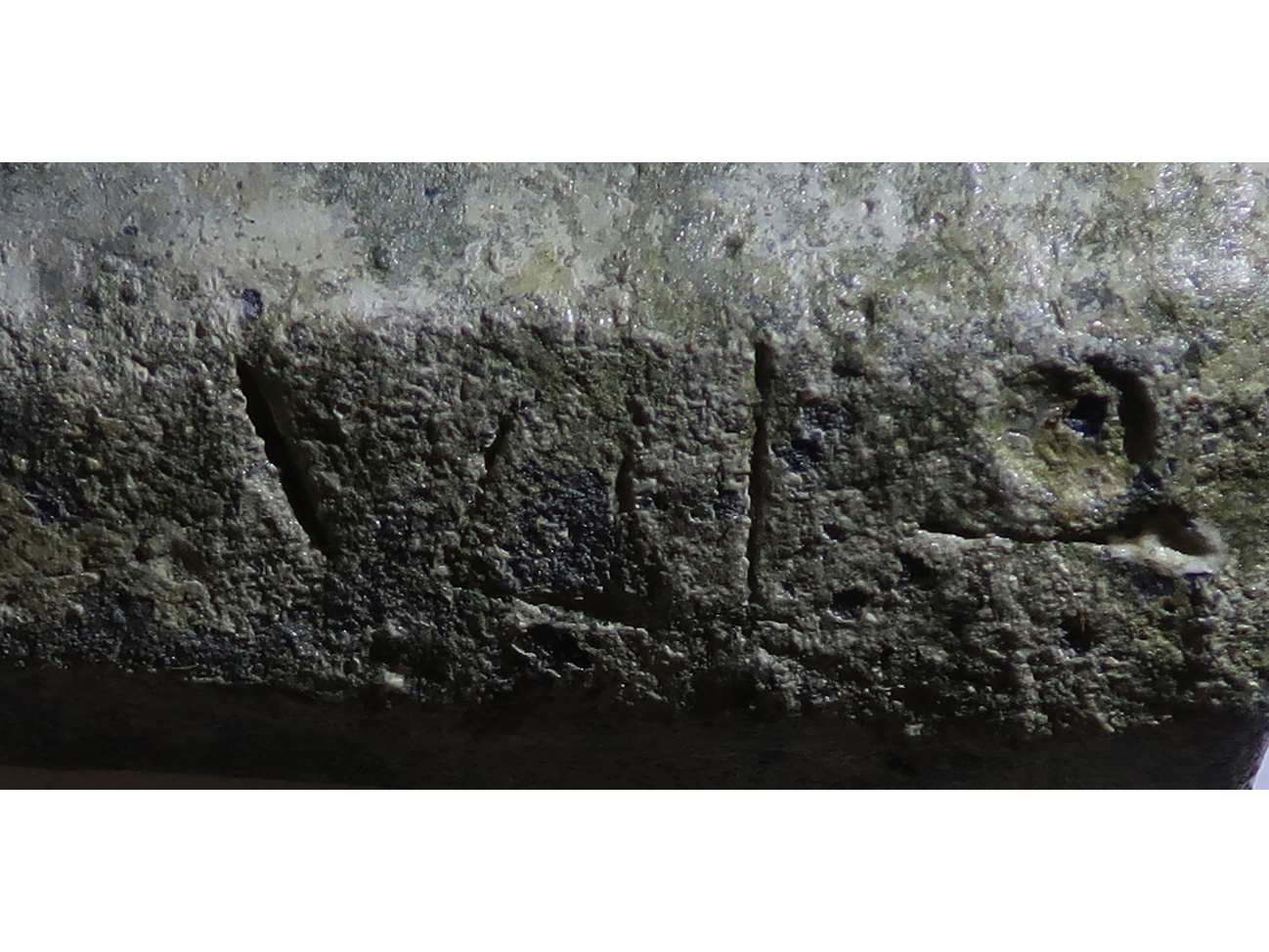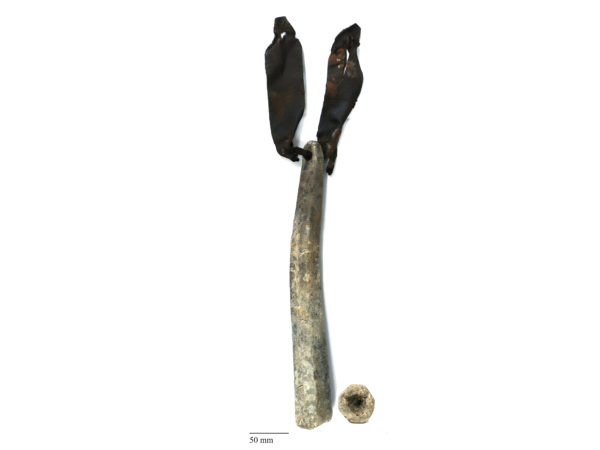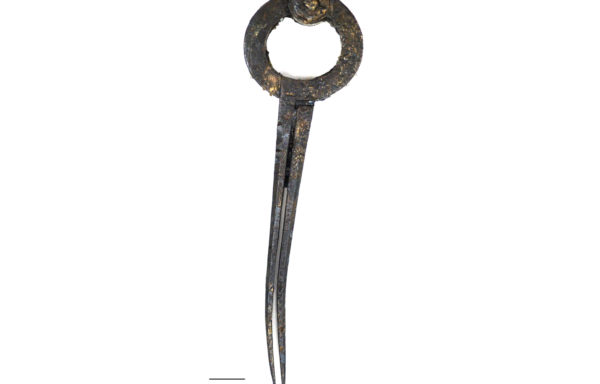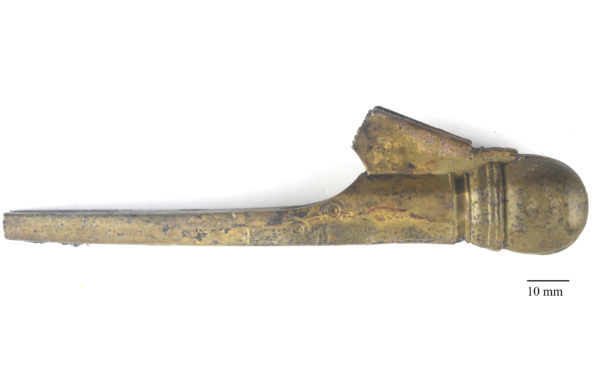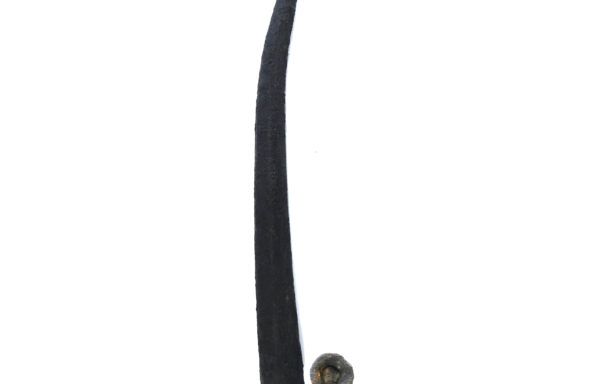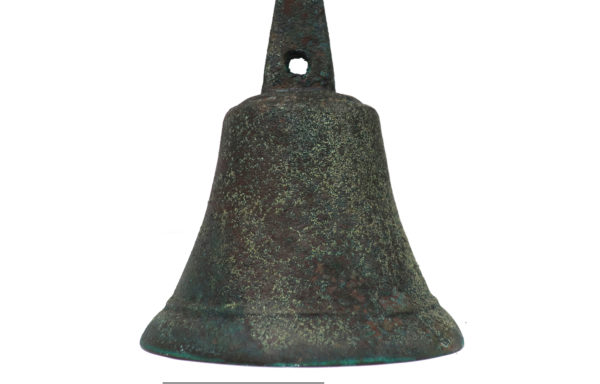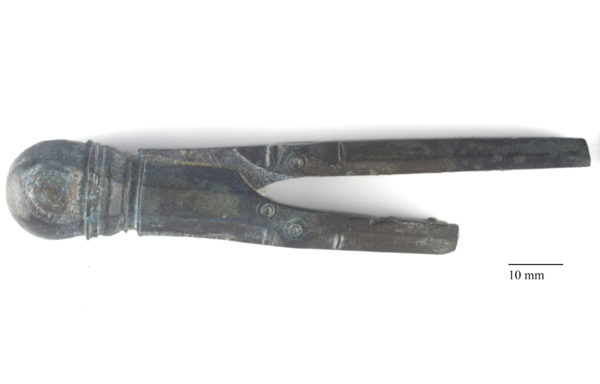Description
The two sounding leads, or plummets, belong to one of the most ancient classes of maritime technology. Such leads were used to determine the depth of water beneath the keel and the nature of the sea-bed. The leads were cast with ‘dimple’ in the bottom that could be ‘armed’ with tallow or grease so when the lead was recovered after sounding, it would bear an impression and carry traces of the sea-bed beneath. Combined with visual features along the coastline, this information would assist the pilot to establish the ship’s position. The depth of water and trend of the logline when the weight was on the sea floor could also inform the pilot of the direction of the tide or current.
Vessels usually carried a minimum of two types leads aboard a hand-lead and a deep-sea lead. Manwayring (1644) states that the deep-sea lead would weight 14lb (6.3kg) with 120 fathoms of line and the hand-lead 7lb (3.2kg) with 20 fathoms of line. Witsen (1690) mentions Dutch vessels of the time carrying a variety of leads including a ‘Peil-loot’ rarely exceeding 36 pounds.
The smaller weight fits within the hand-lead size at 3.5 kg or 7 Amsterdam Pounds, it retained a leather strap (Figure 10) 46mm wide had been used to secure a sounding lead to rope, passing through the ‘eye’ (suspension hole) of the lead, each of the slotted ends had the impression of a cord or thin rope c. 5mm wide clearly visible. The Ashley Book of Knotts (Ashley, 1944) states that hand-leads were formally fitted with a leather strop of this type, allowing different lead to be attached to the lines and prevent chafing on the measured lead lines. This weight also appears to be marked with a VII and an unknown symbol indicating its weight.
